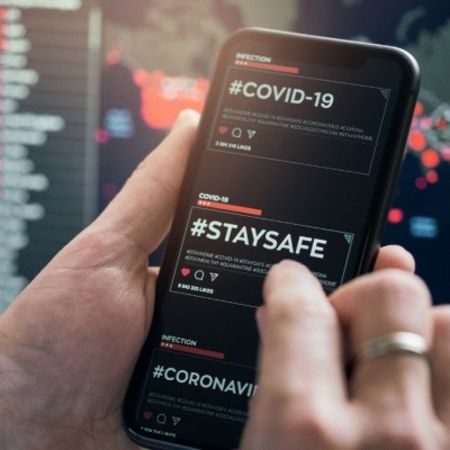The NIH recently approved a 24-month grant for researchers to develop sensors that can be embedded into mobile devices which could potentially detect COVID-19 particles on their surfaces.
The General Electric Research team is set to begin developing miniature sensors that can be embedded into mobile devices in order to detect COVID-19 on their commonly used surfaces.
You might also like: The first six weeks data from the DETECT study show that wearable fitness devices can improve public health efforts to control COVID-19. The DETECT study is a landmark initiative that was launched in March 2020. Read more
This project builds on past research and product development wherein the team will adapt electronic nano-sensors that are able to detect COVID-19 particles. In addition to phones, the team plans on integrating these sensors into a wide range of commonly used products and surfaces, such as tablets, smartwatches, computer keyboards and more.
“We have developed tiny sensors, smaller than a fingertip, that have the same detection capabilities as the high-end analytical instruments the size of a microwave oven,” Radislav Potyrailo, a principal scientist at GE Research and principal investigator on the NIH project, said in a statement. “By delivering this exquisite detection capability of a conventional high-end analytical instrument in a such a small form factor, we can now consider sensing applications that you could envision being implemented as a sensor surface on a mobile phone or on a device even smaller than that.”
This area of research is not novel in the battle against the spread of COVID-19. Early detection of the virus has been on the forefront since discovery of this highly contagious strain of coronavirus. However, much of this research has focused on detecting early biomarkers of the disease through the use of wearables, such as the study recently announced by Fitbit and Stanford University targeting spread amongst college athletes. Fitbit has also conducting research showing its smartwatches can detect COVID-19 even before symptoms emerge and predict the likelihood of hospitalisation. Other devices such as Apple Watches and Oura Rings have also been used to target early warning signs of possible infection, such as heart rate variability and fever.
“One of the first lines of defence against any virus is avoiding exposure, which is easier said than done when you can’t see it,” Potyrailo said. “Through our project with the NIH, we are developing a sensor small enough to embed in a mobile device that could detect the presence of the COVID-19 virus.”
COVID-19 FACT SHEET
- Virus particles can live on surfaces for as long as a couple of hours to up to several days, depending on the type of surface.
- Particles of COVID-19 can survive on plastic and stainless steel objects for up to three days, but can only be detected on copper for up to four hours and on cardboard for up to 24 hours (NEJM).
- While it is possible to become infected with COVID-19 through contact with contaminated surfaces, it is not a common form of transmission (CDC).
- The primary mode of transmission for COVID-19 is through close contact from person to person (CDC).
Source: GE.com
Photo: iStock



























